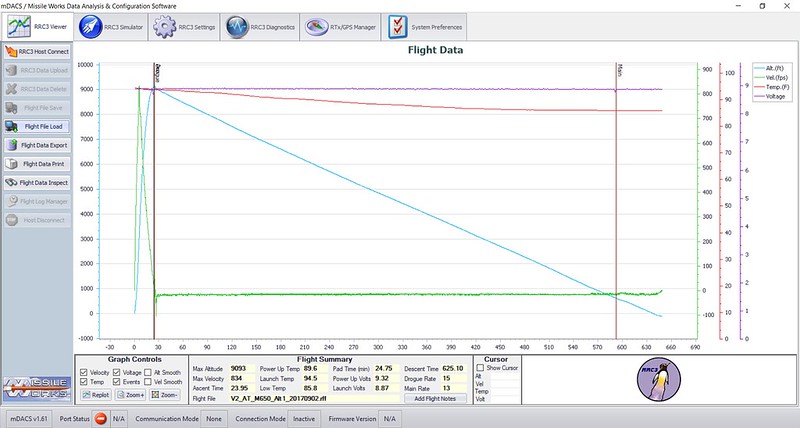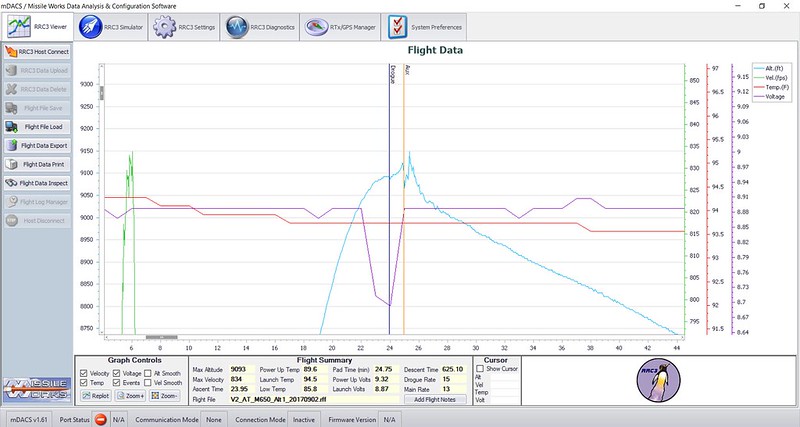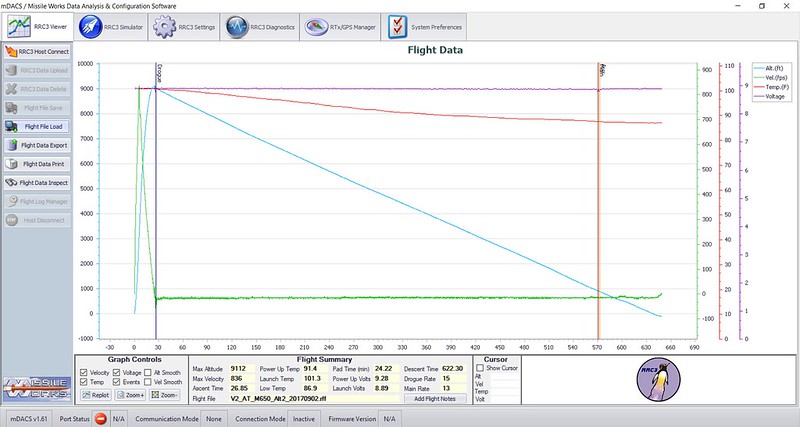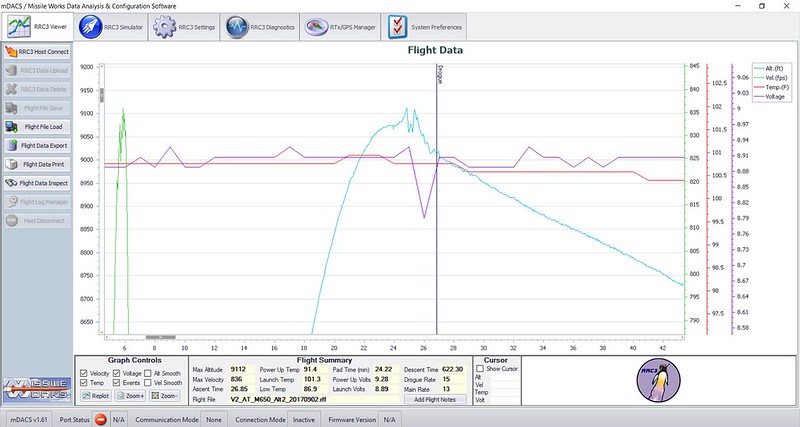OK, so here is my best guess, and I have no way to prove it...maybe my fantastic conjecture is a better way to frame it.
I know the rocket had a big time spin...can't quantify because no video, but enough that I was cringing (probably 2-3 rps). Also, spin doesn't quite describe it. It wasn't a perfect down the Z-axis spin...more of a tight spinning wobble of the type that give the corkscrew smoke trail.
As the motor burns the CG comes forward, not a lot, but about an extra 4" which puts it near the middle of the body tube. As the rocket slowed toward apogee the fins do less and less, and the desire to go straight loses out over the desire to spin about the CG. This causes the angle off the z-axis that the rocket wants to spin around to become larger and larger which builds the centrifugal forces exerted on/by the really heavy NC (most of the weight is in the very tip also, making it particularly bad). This increases the force on the pins which break, and the NC and remaining bt/boat tail assemblies fly away from each other with a great deal of energy resulting in the deformed swivels down the nose-cone to body tube kevlar cord. This event would also have sheared the aft pins.
Since this would occur very close to apogee where the aerodynamic forces are essentially gone, maybe just as the drogue charge fires too it would be indistinguishable on the altimeter traces from deployment.
The boat tail is heavy too, but it's CG is much closer to the overall CG of the rocket...probably within a foot or so at burnout, so the seperation force is far lower than on the NC where the CG is within 10 inches or so of the tip (probably twice as far from the overall CG as the boat tail CG is.
This (and multiple charges simultaneously which I have ruled out) are the only ways I can think to get enough energy to deform the swivels ONLY in the main cord train, and not on the parachute arm of the Y-harness. I was looking at them again last night, and I got REALLY lucky that they stayed together. I was using ROSCO 12/0 which are 1200 lb TEST. I am switching to swivels with 600 lb WORKING LOAD LIMIT (which should mean at least 3000 minimum breaking strength, probably more like 6000 because it is rigging equipment). Once again, the devil is in the details, and in this case the terminology. I'm ignoring shock load here, but that is probably too in the weeds. Basically, more margin on swivels is the goal.
Also, this theory supports Fred's observation/data interpretation of a sideways deployment. The spinning about the axis of travel (Z-axis of the flight path) would give the 50' up and down osculation observed in the alt data before the chute fully inflated.
All the scenarios lead to the same strategy going forward. Upgrade swivels, tighten up part fitment, remove camera and rewrite doc so main deploy at apogee is acceptable part of flight profile. Also, gonna punch it for a shorter time since my still photos show rotation was not a big thing for first 1.5 sec of flight, and because I never fly the same rocket on the same motor twice.
You can have your opinions about if I should have passed by the letter of the law, but the more I look into this the more I believe I deserved to fail the cert. I made mistakes, and only luck got me by on them.







